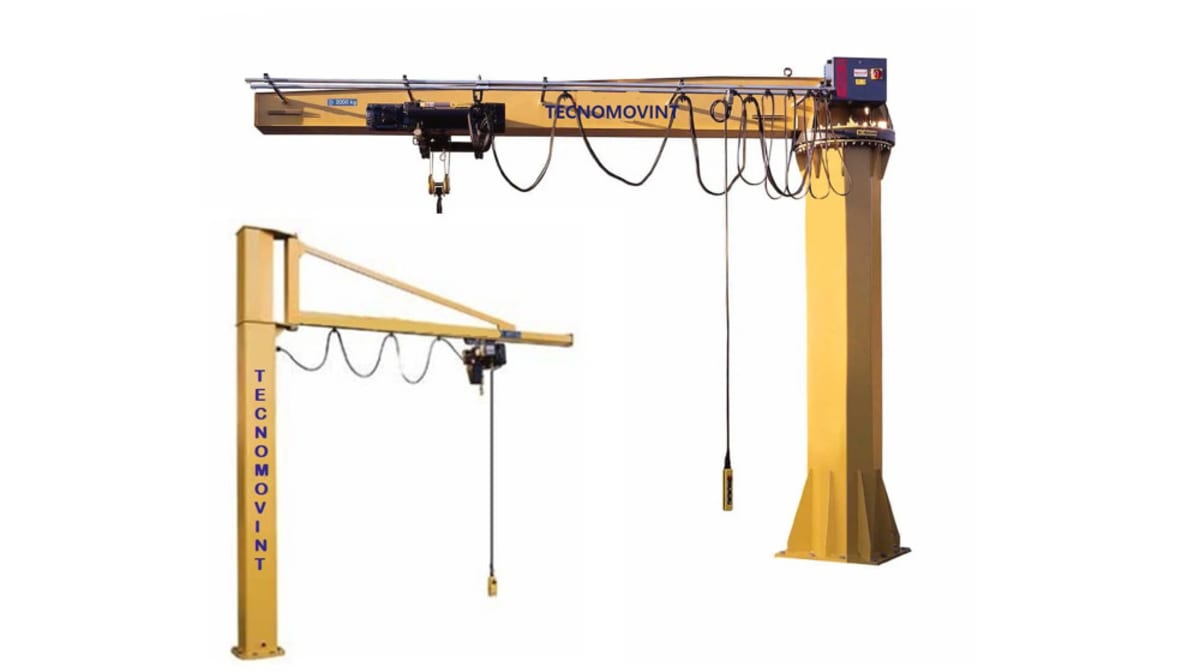Safe load handling with Tecnomovint’s jib cranes

Whether it’s moving goods within a facility, in a yard, or in workstations, Tecnomovint jib cranes ensure maximum safety and optimized workflow. Available in various configurations, with manual or electric rotation, either column-mounted or wall-mounted, they easily fit any working environment.
Functionality and features
Tecnomovint jib cranes perform three essential functions:
- vertical lifting: the load is lifted vertically using a hook on the lifting unit, generally consisting of a chain or wire rope hoist.
- translation: the load is moved horizontally thanks to a trolley, either electric or manual, that runs along the radial axis of the crane arm.
- rotation: the load is rotated around the arm’s fixed axis, either manually or electrically through a gear motor, ensuring complete coverage of the area below.
Tecnomovint jib cranes: types and mounting methods
Tecnomovint boasts over thirty years of experience in the jib crane sector and has always focused on research and technological innovation to offer top-quality products.
The wide range of jib cranes includes various mounting methods. Here are the available types:
- cantilever beam;
- tie rod beam;
- channel type;
- articulated arm;
- electric arm;
- rotating.
Choosing the right jib crane: key parameters
The choice of the optimal jib crane requires the careful evaluation of several parameters, such as:
- actual load capacity: the fundamental parameter is the crane's maximum load capacity, expressed in kilograms (kg). It’s essential to consider the actual weight of the loads to be moved with an adequate safety margin. Additionally, it's important to assess any dynamic loads and their distribution, as they affect the load capacity;
- stress state: jib cranes are subject to various mechanical stresses, such as bending, torsion, and shear. Crane selection must consider the work environment and operating conditions, taking into account vibrations, impacts, and external agents. Last but not least, it’s paramount to consider the crane's resistance to intense and repeated load cycles;
- frequency of use: the choice of the type of crane and its operation type (manual or electric), depends on the frequency of use. For frequent or intensive use, electric jib cranes are recommended, offering greater comfort and precision. Manual jib cranes are less expensive and suitable for occasional use or light loads.
Contact Tecnomovint's team of experts for specialized advice and discover the most suitable jib crane for your industrial productions.

